Is Stephen Hawking’s ‘StarShot’ Really Possible?
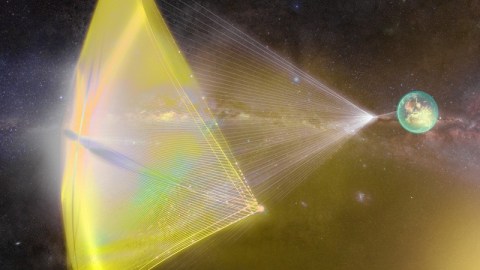
With $100 million invested towards it and an incredible concept behind it, could this be the start of interstellar travel?
“Fundamental physics is like an art more or less. It’s completely non-practical, and you can’t use it for anything. But it’s about the universe and how the world came into being. It’s very remote from your daily life and mine, and yet it defines us as human beings.” –Yuri Milner
If you want to reach another star system, the conventional wisdom is that you either need a new propulsion technology, you need to have multiple generations’ worth of patience, or you need to break the laws of physics. But if you weren’t concerned about sending a human or even a traditional spacecraft, could there be a better, more innovative and cheaper strategy? Last year, a team of scientists wrote a white paper on how an advanced laser array could combine with the solar sail concept to create a “laser sail”-based spacecraft. In theory, we could use current technology and extraordinarily low-mass spaceships (i.e., “starchips”) to reach the nearest stars in a single human lifetime.
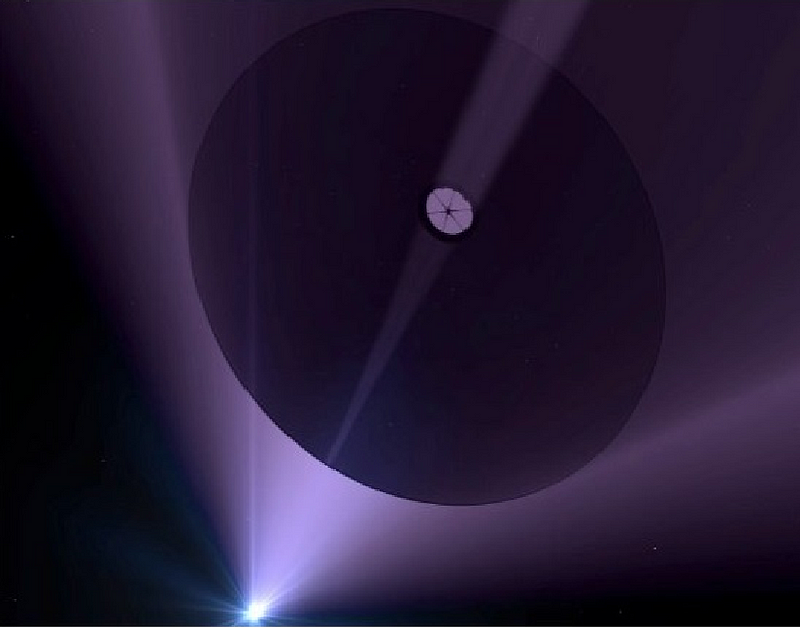
The advantages of this setup to all others are incredible:
- The majority of power/energy used for this doesn’t come from one-time-only use rocket fuel, but rather from lasers, which can be recharged.
- The masses of the starchip spaceships are incredibly low, and so can be accelerated to very fast (close to the speed-of-light) speeds.
- And with the advent of miniaturization in electronics and ultra-strong, lightweight materials, we can actually create usable devices and send them light years away.
The idea isn’t new, but the advent of new technology — both currently available and expected to be available in the next two or three decades — makes this a seemingly realistic possibility.

Moreover, with billionaire Yuri Milner pledging $100 million for this project as part of the Breakthrough Initiative, it seems that humanity might be well on our way to visiting the stars. Many serious scientists are on board with this concept as well, as the technology is developing rapidly. As nanomaterials become better and better, it’s realistic to expect we can build a one-gram sail that’s a square meter in surface area, capable of standing up to the laser fire and reflecting it. One of the great recent advances in laser technology is the ability to couple many small lasers into a large laser array, allowing them to all focus on a single target. Further improvements in laser power and collimation mean that the amount of acceleration a laser can cause has improved greatly since the 1990s as well.
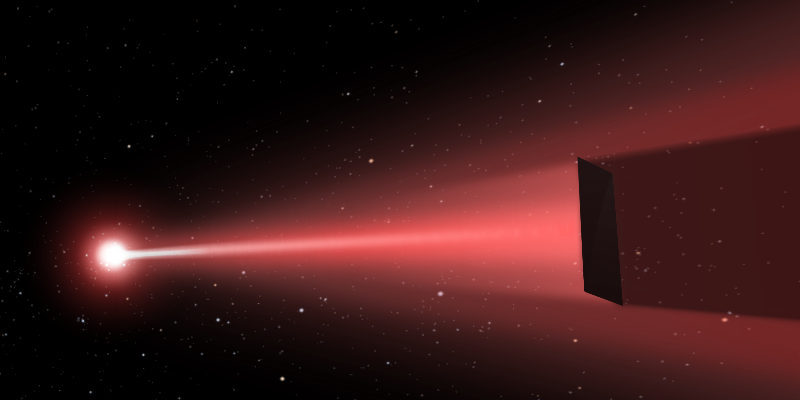
By building a giant laser array in space, aiming them at these ~1 gram-mass reflective sails and continuously firing, we could accelerate these starchips to speeds over 60,000 km/s, or some 20% the speed of light. At that rate, they’d reach the nearest star system in approximately 22 years, and we’d be able to reach nearly 100 known star systems over the span of a century. The size of the laser array is tremendous: around 100 square kilometers, or approximately the size of Washington, D.C. But this is a problem of cost, not of any fundamental limitations to technology.

It sounds almost too good to be true, and that’s because there are some disadvantages that have not been addressed at all. These include:
- The fact that the laser array is planning on being built on the ground, not in space. This is easier to maintain and create and is about 50 times cheaper, but the atmosphere disperses light, and therefore only a small percentage of the light will hit the starchip. Less light means less acceleration, and that means slower speeds for the voyage, making this “starshot” less attractive.
- The fact that striking an unsupported sail-like structure with any sort of flux, whether a laser sail or a solar sail, will develop angular momentum and begin to rotate. It’s unclear how to keep a sail like this from spiraling and spinning out-of-control without a (heavy) stabilizing mechanism on board.
- Even if you did reach your destination, you couldn’t slow down or transmit information back to Earth. Right now, the power available to such a small starchip would be so small that it couldn’t transmit anything useful that would be detectable by those of us back on Earth.
- And finally, the cost factor: $100 million might seem like a lot, but is less than 1% of the cost needed to build and execute such a project, much less to develop the necessary technology, which still hasn’t been done.
There are some hopes to address some of these issues, but right now the science on how to do so is unclear at best. Would there be an improvement in laser collimation technology? Would we build the array so large (or so powerfully) that the amount of power the sail would receive is large enough? Would we build the sail thinner and larger and contain a greater amount of the laser light? And would a sail, even one that was 99.9995% reflective, be able to stand up to a gigaWatt laser, or would the 0.0005% of absorbed energy destroy it?
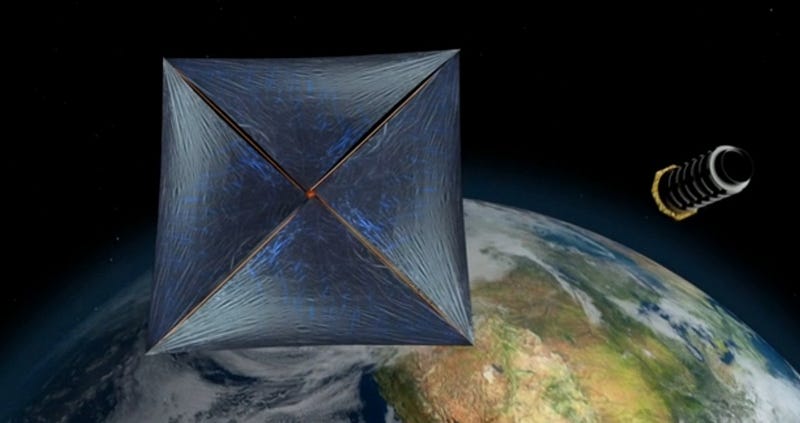
How about the spinning problem; would we invent and develop nano-gyroscopes to stabilize the sail against rotational motion? If we can’t stabilize a spacecraft, can we even get it on its way to another star system, or will it go in a random direction, as even an error of 0.1% of a degree will mean missing your target by billions and billions of miles? What about the transmission/communication problem; would we put tiny amounts of Pu-238 on board for power generation? Would we rely on some new, undeveloped technology for information transmission? And considering that even the Voyager spacecrafts, at their paltry distance of 0.002 light years, cannot still communicate with Earth with most of their instruments, how do we hope to have a ~1 gram chip communicate with us from distances over 1,000 times as great?
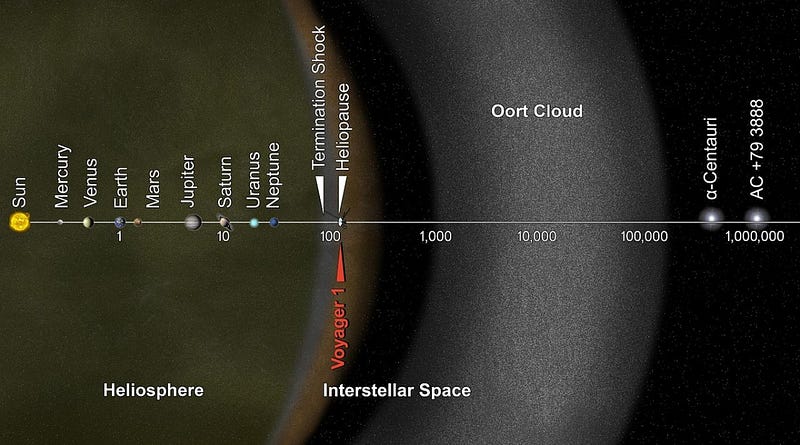
This last challenge might be the greatest of all. According to planetary scientist Bruce Betts:
“If you could fly to a forest, and you could see a tree fall, but you can’t mention to anyone, did it really matter?”
This could be the greatest problem facing the project: are we simply spending tens of billions of dollars to deliver ~1-gram artifacts from Earth into deep space, never to be heard from again?
Which isn’t to say let’s not do this, but rather to say let’s be honest about the challenges facing us. Because if we’re going to do it, we’d better do it right and make this effort as meaningful as possible. This is an amazing possibility and one that needs to be explored further, but $100 million and our current, greatest technologies won’t even begin to get us there.
This post first appeared at Forbes. Leave your comments on our forum, check out our first book: Beyond The Galaxy, and support our Patreon campaign!





